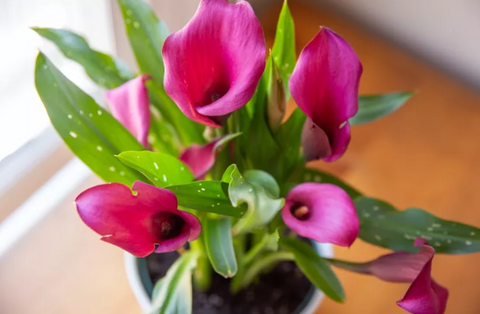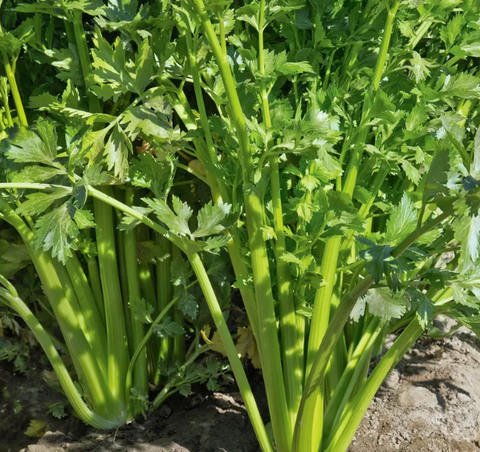Introduction
Azaleas are prized for their vibrant blooms and versatility in garden landscaping. This guide will walk you through everything you need to know about selecting, planting, and caring for azaleas to ensure they thrive in your garden landscape. The following content also has some reference value for raised garden beds.

Selecting the Right Azalea Varieties
Deciduous vs. Evergreen Azaleas
Deciduous azaleas shed their leaves in the fall, while evergreen varieties retain their foliage year-round. Deciduous types often offer more vibrant fall colors, while evergreens provide year-round interest with their glossy leaves.
Flowering Time and Color Varieties
Azaleas bloom at different times depending on the variety, with some flowering in early spring and others in late spring or early summer. Choose from a wide array of colors, including shades of pink, red, white, and purple, to complement your garden design.
Considerations for Climate and Soil Conditions
Select azalea varieties suited to your climate zone and soil conditions. Some varieties thrive in acidic, well-draining soil, while others prefer slightly alkaline conditions. Consider factors such as rainfall, temperature fluctuations, and soil composition when choosing azaleas for your garden.
Choosing the Ideal Location for Azaleas
Sunlight Requirements
Azaleas perform best in partial shade or dappled sunlight, where they receive morning sun and afternoon shade. Avoid planting them in full sun, as this can cause leaf scorch and reduce flower production.
Soil pH and Drainage
Azaleas prefer acidic soil with a pH range of 4.5 to 6.0. Test your soil pH and amend it as needed with sulfur or acidic fertilizers to create optimal growing conditions. Ensure the soil is well-draining to prevent waterlogged conditions, which can lead to root rot.
Protection from Harsh Weather Conditions
Plant azaleas in locations sheltered from strong winds and extreme temperatures. Provide additional protection during winter months with burlap wraps or other insulating materials to prevent cold damage to foliage and flower buds.

Planting Azaleas in Your Garden
Preparing the Planting Site
Clear the planting area of weeds, rocks, and debris, and amend the soil with organic matter such as compost to improve fertility and drainage. Take care not to disturb the shallow roots of nearby trees or shrubs when planting azaleas.
Digging the Planting Hole
Dig a hole twice as wide and slightly deeper than the azalea's root ball. Loosen the soil at the bottom of the hole to encourage root growth and establishment.
Planting Depth and Spacing Guidelines
Set the azalea in the planting hole so that the top of the root ball is level with the surrounding soil surface. Backfill the hole with amended soil, gently firming it around the roots. Space multiple azaleas according to the mature size of the variety, typically 2 to 6 feet apart.
Watering and Fertilizing Azaleas
Understanding Azalea's Watering Needs
Water azaleas deeply and regularly, especially during dry periods and hot weather. Provide enough water to keep the soil consistently moist but not waterlogged. Mulch around the base of azaleas to retain soil moisture and regulate temperature.
Proper Fertilization Techniques
Fertilize azaleas in early spring with a balanced, slow-release fertilizer formulated for acid-loving plants. Avoid high-nitrogen fertilizers, as they can promote excessive foliage growth at the expense of flowering. Follow package instructions for application rates and frequency.
Mulching for Moisture Retention and Soil Health
Apply a 2-3 inch layer of organic mulch such as pine bark or wood chips around the base of azaleas to conserve moisture, suppress weeds, and regulate soil temperature. Replenish mulch as needed to maintain a consistent layer throughout the growing season.
Pruning and Shaping Azaleas
Timing and Frequency of Pruning
Prune azaleas after flowering to shape and maintain their desired size and form. Remove dead, damaged, or crossing branches, as well as any overly dense growth that inhibits air circulation and light penetration.
Techniques for Shaping Azaleas
Use sharp, clean pruning shears to make angled cuts just above a healthy bud or lateral branch. Aim to create an open, airy structure that allows sunlight to reach the center of the plant and promotes vigorous growth.
Removing Dead or Diseased Branches
Inspect azaleas regularly for signs of disease or pest infestations, such as yellowing foliage, distorted growth, or fungal lesions. Prune out affected branches promptly to prevent the spread of disease and maintain overall plant health.
Managing Pests and Diseases
Common Pests That Affect Azaleas
Keep an eye out for common pests such as azalea lace bugs, spider mites, and aphids, which can damage foliage and reduce flower production. Monitor plants regularly and treat infestations with insecticidal soap or horticultural oil as needed.
Identifying and Treating Azalea Diseases
Watch for signs of fungal diseases such as powdery mildew, leaf spots, and root rot, which can affect azaleas in humid or poorly drained conditions. Improve air circulation around plants by pruning and thinning out dense growth, and avoid overhead watering to reduce moisture on foliage. Treat fungal infections with fungicidal sprays or systemic fungicides applied according to label instructions.
Preventative Measures for Pest and Disease Control
Take proactive steps to prevent pest and disease problems by maintaining overall plant health and vigor. Provide proper cultural care, including watering, fertilizing, and pruning, to minimize stress on azaleas and make them less susceptible to attack. Monitor plants regularly for signs of pests and diseases, intervening early to prevent issues from escalating.
Enhancing Azalea Health and Bloom
Providing Adequate Air Circulation
Promote good air circulation around azaleas by spacing plants properly and pruning to open up the canopy. This helps reduce humidity levels and prevent fungal diseases, while also encouraging strong, healthy growth.
Protecting Azaleas During Winter Months
Shield azaleas from cold temperatures and harsh winter weather by wrapping them in burlap or applying a layer of mulch around the base of plants. Avoid pruning in late fall or winter, as this can stimulate new growth that is susceptible to frost damage.
Monitoring and Adjusting Soil pH as Needed
Regularly test soil pH to ensure it remains within the optimal range for azaleas. If soil pH becomes too high, amend it with elemental sulfur or acidifying fertilizers to lower pH and create more favorable growing conditions for azaleas.
Enjoying Azalea Blooms
Tips for Extending the Blooming Season
Select azalea varieties with staggered bloom times to enjoy a longer flowering season in your garden. Plant early, mid, and late-blooming varieties to ensure continuous color from spring through early summer.
Incorporating Azaleas into Garden Design
Use azaleas as focal points or accents in garden beds and borders, incorporating them into mixed plantings with other shrubs, perennials, and annuals. Choose complementary colors and textures to create visually appealing combinations that enhance your landscape.

Using Azaleas in Floral Arrangements
Harvest azalea blooms for use in cut flower arrangements and bouquets, bringing their vibrant colors and delicate fragrances indoors. Combine azaleas with other garden flowers and foliage to create stunning floral displays for special occasions or everyday enjoyment.
Conclusion
Azaleas are versatile and beautiful shrubs that can add color, texture, and charm to any garden landscape. By selecting the right varieties, providing optimal growing conditions, and practicing proper care techniques, you can enjoy the beauty of azaleas in your garden year-round. Whether you're a novice gardener or a seasoned enthusiast, incorporating azaleas into your outdoor space will surely enhance its beauty and create a welcoming environment for all to enjoy. So, roll up your sleeves, get out in the garden, and start growing and caring for azaleas today!









